
Nutrition is often regarded as the first form of medicine. Indeed, it plays a fundamental role in our health! This article presents 10 essential keys to adopting simple dietary habits that can optimize your health and well-being.
1. Have a savory breakfast!
Most of us eat cereal with milk or buttered white toast with jam alongside a tall glass of orange juice for breakfast. But that breakfast is far from ideal in terms of nutrition. Indeed, that kind of overly sugary meal encourages insulin secretion, which should be avoided — especially in the morning.
It’s best to opt for a savory breakfast. Eating protein in the morning promotes the production of dopamine, a neurotransmitter that stimulates the mind and jump-starts your motivation. In addition to making you more motivated and alert, consuming protein at breakfast can also help you feel full longer and reduce snacking later in the morning.
Eggs are the perfect solution because they contain extremely high quality protein and are rich in vitamins and minerals. But there are other protein sources you can try for variety:
 | Animal protein: one ounce of cheese (preferably goat or sheep milk), a yogurt (goat or sheep milk), sardines or a slice of good ham (from time to time) |
 | Plant-based protein: soy-based vegan pudding packed with protein, chia seeds, nuts (almonds, walnuts, hazelnuts, etc.) |
2. Eat at least 2 to 3 fruits and 2 to 3 servings of vegetables a day
A daily intake of 28 to 32 oz of fruit and vegetables is ideal, i.e. 2 to 3 servings of vegetables (17 oz) and 2 to 3 fruits. For lunch and dinner, choose at least one raw and one cooked fruit or vegetable.
After all, fresh fruits and vegetables are very high in fiber, which has an essential role to optimizing our health. It contributes to satiety and therefore plays an important role in weight management, it helps regulate our blood sugar levels, and it also facilitates digestion and helps balance our gut microbiota.
Fruits and vegetables are also rich in vitamins, minerals and antioxidants. Getting the right amount of antioxidants is particularly important for preventing cancer, degenerative diseases and cardiovascular disease.
Vary the fruits and vegetables on your plate and their colors as much as possible to reap all their benefits!
Warning: fruit juice is not the same as fruit! Juice lacks the fiber that regulates the rate at which sugars are assimilated, so its glycemic index is much higher than that of whole fruit.
3. Eat good fat
The quest to eliminate fat has no scientific or biological basis. In fact, “good fats” are responsible for the proper development of eyesight, brain membranes and neural connections. In addition to being good for the brain, they help reduce cardiovascular risks. So good fat is a crucial ally for good health!
But not all fats are created equal! The problem is not that we eat too much fat these days, but that we eat too much bad fat.
Limit your intake of saturated fats and omega-6, which are currently over-consumed. These fats are found in animal products (meat, butter, cheese, etc.), in some vegetable oils (sunflower, coconut, palm, grape seed) and above all in many processed products (cookies, potato chips, etc.).
On the other hand, make sure you get plenty of omega-3 fatty acids! Omega-3 fatty acids occur primarily in fatty fish (tuna, salmon, mackerel, sardines, etc.), certain oils (canola, linseed, walnut), seeds (chia, flax, hemp) and in some vegetables in very small quantities (watercress, lamb’s lettuce, cabbage). Caution: do not consume tuna or salmon more than once a week, as they generally contain high levels of various pollutants, including heavy metals (mercury, PCBs, dioxins, etc.).
Choose products rich in omega-9 fatty acids. Omega-9 fatty acids occur in large quantities in olive oil, hazelnut oil, avocado, hazelnuts and almonds. In view of the environmental impact of avocados, we recommend eating them only occasionally.
4. Take the time to chew
Chewing may seem like a trivial step and is often neglected; however, it plays an essential role in our health.
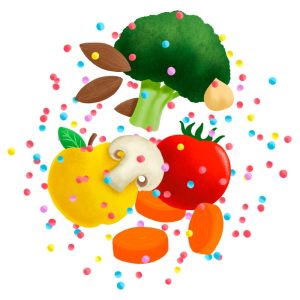 | Better nutrient absorption: good chewing transforms food into nutrients that reach our cells more effectively. |
 | Eating less and managing weight: chewing triggers various hormones that send a satiety signal to the brain during the meal. |
 | Improving digestion: insufficient chewing forces the stomach to produce more gastric juice to break down large pieces. This excess acid can irritate the digestive lining and cause acid reflux. |
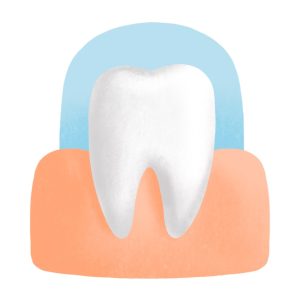 | Protecting teeth and gums: chewing helps prevent cavities by stimulating saliva production, which cleans dental plaque and protects enamel from acidity. It also exercises our gums, essential for good dental health. |
5. Fill up on antioxidants
Antioxidants are extremely beneficial molecules that are crucial to cell protection. They help guard against various afflictions, such as premature skin aging, cancer, degenerative disorders, cataracts, arthritis and cardiovascular disease.
The good news is that these miracle workers occur all around us in our food. Eating generous amounts of fruits and vegetables is usually enough to cover the body’s needs. Here are some foods with particularly high antioxidant properties:
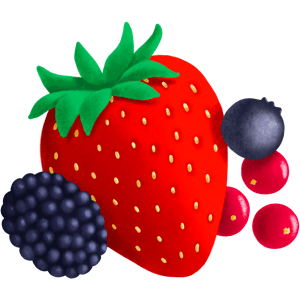 | Berries: blueberries, blackberries, goji berries, acai berries, raspberries, strawberries |
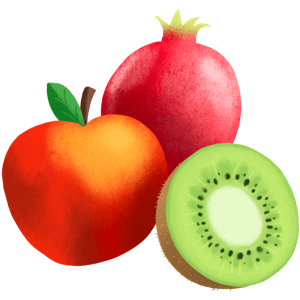 | Other fruits: apples, plums, pomegranates, oranges, kiwis, grapes, figs |
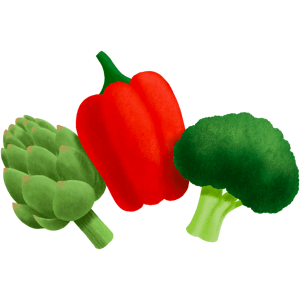 | Vegetables: artichokes, cabbages, broccoli, spinach, bell peppers |
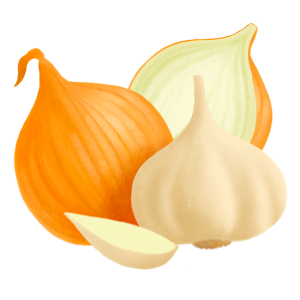 | Allium family: onion, garlic, shallot |
 | Spices: cloves, ginger, turmeric, cinnamon |
 | Herb: thyme, basil, oregano, parsley, chives, dill, mint, rosemary, bay leaf |
 | Hot beverages: tea and coffee |
 | Cacao and chocolate: pure cocoa powder, dark chocolate (at least 70% cacao) |
You should eat organic versions of these foods because organically grown foods have 20% to 70% more polyphenols (a type of antioxidant found in many vegetables) than conventionally grown foods.
6. Eat mindfully
In our busy lives, many of us eat breakfast at breakneck speed, or gobble up lunch in front of our computers to make the most of our time. We are completely disconnected from our relationship with food.
However, it is important to devote at least 20 minutes to each meal. Mindfulness is about considering a moment in its own right, and paying attention to what we eat.
Applying mindfulness to our eating habits will have several beneficial impacts. First, it enables us to listen to our hunger and satiety signals and ensure that our intake is adapted to our needs. This will reduce the quantities we consume and our cravings for snacks.
Mindful eating also helps develop a preference for healthier foods: when we eat impulsively and emotionally without listening to our bodies, we no longer feel the pleasure of eating, and we are more susceptible to fatty, sweet and salty foods.
Finally, mindfulness also contributes to mental well-being. It allows you to observe your feelings without judgment, and to listen to yourself. Thinking only of the present moment during a meal also helps to still the mind and lower stress and anxiety.
7. Limit your salt intake
Salt is essential to proper body function, but excessive consumption can lead to the development of certain diseases. Today, we consume more than twice as much salt than we really need!
Excessive salt intake increases the risk of high blood pressure. Hypertension itself can lead to heart disease and even stroke. Salt consumption also increases the risk of cancer and stomach ulcers.
There are simple ways to reduce salt intake:
- Limit foods high in salt: ready-made meals, potato chips, cold cuts, pizza, sauces, cheese, etc.
- Opt for alternatives to add flavor to dishes, such as garlic, onion, thyme, chives, basil, lemon, pepper, curry, paprika and all sorts of spices.
- Taste before salting
- Do not add salt to cooking water
- Remove the salt shaker from the table
8. Go vegetarian at dinner
It is recommended to prepare a vegetarian dinner, meaning no meat, fish or eggs. This type of meal will help pave the way for a good night’s sleep.
So, for dinner you should opt for plant-based protein rather than animal protein. Indeed, animal protein encourages the production of dopamine, a neurotransmitter responsible for alertness and motivation. While it is perfect in the morning to rev you up, at night the body needs to make serotonin, a neurotransmitter associated with soothing and sleep regulation.
Serotonin is made from tryptophan, an amino acid found in plant-based protein, such as legumes, soy, brown rice, sunflower seeds and chocolate. The carbohydrates found in legumes and grain products also help optimize serotonin production.
Some foods promote serotonin production, which optimizes sleep quality:
 | Walnuts and almonds: in addition to tryptophan, they contain magnesium, a lack of which can be linked to sleep disorders. |
 | Carbohydrates (from whole grains and fruits): thanks to insulin secretion, their amino acids will be directed to the brain rather than the muscles. That will make room for tryptophan in the brain, so it is more readily available for serotonin production. |
Furthermore, animal proteins and cooked fats are very demanding for the digestive system: they are made up of molecules that can take a long time to digest.
9. Opt for low-temperature cooking
Cooking at high temperatures erodes the nutritional quality of food: it leads to the destruction of certain vitamins and minerals. Some vitamins are very sensitive to heat, and foods can easily lose 50% of their initial vitamin content during cooking. The longer the cooking time and the higher the temperature, the lower the nutritional content of the food.
In addition, browning food during cooking is accompanied by the production of Maillard bodies, compounds which, in excessive quantities, can increase the risk of developing certain cancers.
Opt for low-temperature cooking, i.e. below 210°F. The most useful method is gently steaming your foods.
10. Eat raw foods and avoid processed foods
Raw food is a product that is sold in its original form and has not undergone any
processing: fruit and vegetables, legumes, eggs, fish, etc. Conversely, processed products
are those that have undergone some form of transformation in order to be sold and which do not occur in this form in nature: ready-made meals, fruit juices and soft drinks, cookies, etc.
Ultra-processed foods have problematic health effects: they are often low in nutrients with a high glycemic load. What’s more, they generally contain little fiber and their texture can be too soft to be satiating.
Finally, consuming processed foods throws the gut microbiota out of balance. As a result, the intestinal microbiota has fewer good bacteria, which are essential to proper body function since they fight pathogens (e.g. parasites and bacteria) and perform essential functions to prevent lifestyle diseases.
Here are some tips for avoiding processed foods:
 | Go with short ingredient lists, meaning no more than 4 or 5 ingredients. |
 | Avoid products whose ingredient list includes items with complicated names (glucose-fructose syrup, hydrolyzed proteins, modified starch, etc.). |
 | Choose products without problematic additives. Of course, you can use Yuka for this! |
 | Eat as many raw, unprocessed products as possible, that you have prepared and cooked yourself. |
- Hu FB, Stampfer MJ, Rimm EB et al. A prospective study of egg consumption and risk of cardiovascular disease in men and women. JAMA. 1999;281:1387-1394.
- Vorster HH, Benade AJ, Barnard HC et al. Egg intake does not change plasma lipoprotein and coagulation profiles. Am J Clin Nutr. 1992;55:400-410.
- Katz DL, Evans MA, Nawaz H et al. Egg consumption and endothelial function: a randomized controlled crossover trial. Int J Cardiol. 2005;99:65-70.
- Howell WH, McNamara DJ et al. Plasma lipid and lipoprotein responses to dietary fat and cholesterol: a meta-analysis. Am J Clin Nutr. 1997;65:1747-1764.
- Krauss RM, Eckel RH, Howard B et al. AHA Dietary Guidelines: revision 2000: A statement for healthcare professionals from the Nutrition Committee of the American Heart Association. Stroke. 2000;31:2751-2766.
- Swanson D, Block R, Mousa SA. Omega-3 fatty acids EPA and DHA: health benefits throughout life. Adv Nutr. 2012 Jan;3(1):1-7. doi: 10.3945/an.111.000893. Epub 2012 Jan 5. Review.
- Nichols PD, McManus A, Krail K, Sinclair AJ, Miller M. Recent advances in omega-3: Health Benefits, Sources, Products and Bioavailability. Nutrients. 2014;6(9):3727–3733. Published 2014 Sep 16.
- Étude individuelle nationale des consommations alimentaires 3 (INCA 3) – Avis de l’Anses – Rapport d’expertise collective.
- Delgado GE, Krämer BK, Lorkowski S, März W, von Schacky C, Kleber ME. Individual omega-9 monounsaturated fatty acids and mortality-The Ludwigshafen Risk and Cardiovascular Health Study. J Clin Lipidol. 2017 Jan – Feb;11(1):126-135.e5
- Flood-Obbagy, J. E.; Rolls, B. J. The Effect of Fruit in Different Forms on Energy Intake and Satiety at a Meal. Appetite 2009, 52 (2), 416–422.
- Dagfinn Aune, Edward Giovannucci, Paolo Boffetta, Lars T. Fadnes, NaNa Keum, Teresa Norat, Darren C. Greenwood, Elio Riboli, Lars J. Vatten, Serena Tonstad. Fruit and vegetable intake and the risk of cardiovascular disease, total cancer and all-cause mortality–a systematic review and dose-response meta-analysis of prospective studies. International Journal of Epidemiology, 2017; DOI: 10.1093/ije/dyw319
- Tavoularis G., Hébel P., «Fruits et légumes : les Français suivent de moins en moins la recommandation», in: Consommations et modes de vies, CREDOC, n°292, ISSN 0295-9976, Juillet 2017
- Etude NutriNet-Sante : https://info.etude-nutrinet-sante.fr/protectednew/pdf/DOSSIER_PRESSE_Nutrinet-Sante_22_11_12.pdf
- Feder D, Fonseca FLA. Chapter 2 – The Mechanism of Fiber Effects on Insulin Resistance. In: Samaan RA, ed. Dietary Fiber for the Prevention of Cardiovascular Disease. Academic Press; 2017:23-33.
- Patel S. Anti-Obesity and Anti-Diabetes Foods: High Fibre Diets. In: Melton L, Shahidi F, Varelis P, eds. Encyclopedia of Food Chemistry. Oxford: Academic Press; 2019:248-252.
- De Vadder F, Kovatcheva-Datchary P, Goncalves D, Vinera J, Zitoun C, Duchampt A, Bäckhed F, Mithieux G. Microbiota-generated metabolites promote metabolic benefits via gut-brain neural circuits. Cell. 2014 Jan 16;156(1-2):84-96.
- Threapleton DE, Greenwood DC, Evans CE, Cleghorn CL, Nykjaer C, Woodhead C, Cade JE, Gale CP, Burley VJ. Dietary fibre intake and risk of cardiovascular disease: systematic review and meta-analysis. BMJ. 2013 Dec 19;347:f6879.
- Imai S, Fukui M, Kajiyama S. Effect of eating vegetables before carbohydrates on glucose excursions in patients with type 2 diabetes. J Clin Biochem Nutr. 2014 Jan;54(1):7-11.
- BROWNLEE, Iain A., CHATER, Peter I., PEARSON, Jeff P., et al. Dietary fibre and weight loss: Where are we now?. Food Hydrocolloids, 2017, vol. 68, p. 186-191.
- Chandalia M, Garg A, Lutjohann D, von Bergmann K, Grundy SM, Brinkley LJ.
- Beneficial effects of high dietary fiber intake in patients with type 2 diabetes mellitus. N Engl J Med. 2000 May 11;342(19):1392-8.
- Kim Y, Je Y. Dietary fibre intake and mortality from cardiovascular disease and all cancers: A meta-analysis of prospective cohort studies. Arch Cardiovasc Dis. 2016 Jan;109(1):39-54.
- Siri-Tarino, P. W., Sun, Q., Hu, F. B., & Krauss, R. M. (2010). Saturated fat, carbohydrate, and cardiovascular disease. The American journal of clinical nutrition, 91(3), 502-509.
- DiNicolantonio JJ, Lucan SC, O’Keefe JH. The Evidence for Saturated Fat and for Sugar Related to Coronary Heart Disease. Prog Cardiovasc Dis. 2016 Mar-Apr;58(5):464-72. doi: 10.1016/j.pcad.2015.11.006. Epub 2015 Nov 14. Review.
- Patterson E, Wall R, Fitzgerald GF, Ross RP, Stanton C. Health implications of high dietary omega-6 polyunsaturated Fatty acids. J Nutr Metab. 2012;2012:539426.
- Innes JK, Calder PC. Omega-6 fatty acids and inflammation. Prostaglandins Leukot Essent Fatty Acids. 2018 May;132:41-48. doi: 10.1016/j.plefa.2018.03.004. Epub 2018 Mar 22. Review.
- Simopoulos AP. The importance of the ratio of omega-6/omega-3 essential fatty acids. Biomed Pharmacother. 2002 Oct;56(8):365-79. Review. PubMed PMID: 12442909.
- Simopoulos AP. An Increase in the Omega-6/Omega-3 Fatty Acid Ratio Increases the Risk for Obesity. Nutrients. 2016;8(3):128. Published 2016 Mar 2.
- DiNicolantonio JJ, O’Keefe JH. Importance of maintaining a low omega-6/omega-3 ratio for reducing inflammation. Open Heart. 2018;5(2):e000946. Published 2018 Nov 26.
- de Lorgeril M, Salen P. New insights into the health effects of dietary saturated and omega-6 and omega-3 polyunsaturated fatty acids. BMC Med. 2012;10:50. Published 2012 May 21.
- Bernard, Carole & Vanduffel, Steven & Ye, Jiang, 2019. « Optimal strategies under Omega ratio, » European Journal of Operational Research, Elsevier, vol. 275(2), pages 755-767.
- Dhaka V, Gulia N, Ahlawat KS, Khatkar BS. Trans fats-sources, health risks and alternative approach – A review. J Food Sci Technol. 2011;48(5):534–541.
- Iqbal MP. Trans fatty acids – A risk factor for cardiovascular disease. Pak J Med Sci. 2014;30(1):194–197.
- Mozaffarian D, Aro A, Willett WC. Health effects of trans-fatty acids: experimental and observational evidence. Eur J Clin Nutr. 2009 May;63 Suppl 2:S5-21.
- Shah B, Thadani U. Trans fatty acids linked to myocardial infarction and stroke: What is the evidence? Trends Cardiovasc Med. 2019 Jul;29(5):306-310. doi: 10.1016/j.tcm.2018.09.011. Epub 2018 Sep 19. Review. PubMed PMID: 31130187.
- Okubo H, Murakami K, Masayasu S, Sasaki S. The Relationship of Eating Rate and Degree of Chewing to Body Weight Status among Preschool Children in Japan: A Nationwide Cross-Sectional Study. Nutrients. 2018;11(1):64. Published 2018 Dec 29.
- Zhu Y, Hollis JH. Relationship between chewing behavior and body weight status in fully dentate healthy adults. Int J Food Sci Nutr. 2015 Mar;66(2):135-9.
- Ashiga H, Takei E, Magara J, et al. Effect of attention on chewing and swallowing behaviors in healthy humans. Sci Rep. 2019;9(1):6013. Published 2019 Apr 12.
- N’gom PI, Woda A. Influence of impaired mastication on nutrition. J Prosthet Dent. 2002;87(6):667-673.
- Mann T, Heuberger R, Wong H. The association between chewing and swallowing difficulties and nutritional status in older adults. Aust Dent J. 2013;58(2):200-206.
- Furuta M, Yamashita Y. Oral Health and Swallowing Problems. Curr Phys Med Rehabil Rep. 2013;1(4):216-222. Published 2013 Sep 15.
- Furuta M, Komiya-Nonaka M, Akifusa S, Shimazaki Y, Adachi M, Kinoshita T, Kikutani T, Yamashita Y. Interrelationship of oral health status, swallowing function, nutritional status, and cognitive ability with activities of daily living in Japanese elderly people receiving home care services due to physical disabilities. Community Dent Oral Epidemiol. 2013 Apr;41(2):173-81.
- Miquel-Kergoat S, Azais-Braesco V, Burton-Freeman B, Hetherington MM. Effects of chewing on appetite, food intake and gut hormones: A systematic review and meta-analysis. Physiol Behav. 2015 Nov 1;151:88-96.
- Crinnion WJ. Organic foods contain higher levels of certain nutrients, lower levels of pesticides, and may provide health benefits for the consumer. Altern Med Rev. 2010 Apr;15(1):4-12. Review.
- Barański M, Srednicka-Tober D, Volakakis N, Seal C, Sanderson R, Stewart GB, Benbrook C, Biavati B, Markellou E, Giotis C, Gromadzka-Ostrowska J, Rembiałkowska E, Skwarło-Sońta K, Tahvonen R, Janovská D, Niggli U, Nicot P, Leifert C. Higher antioxidant and lower cadmium concentrations and lower incidence of pesticide residues in organically grown crops: a systematic literature review and meta-analyses. Br J Nutr. 2014 Sep 14;112(5):794-811.
- https://presse.inserm.fr/moins-de-cancers-chez-les-consommateurs-daliments-bio/32820/
- Morillo Sarto H, Barcelo-Soler A, Herrera-Mercadal P, et al. Efficacy of a mindful-eating programme to reduce emotional eating in patients suffering from overweight or obesity in primary care settings: a cluster-randomised trial protocol. BMJ Open. 2019;9(11):e031327. Published 2019 Nov 21.
- Mantzios M. Editorial: Mindfulness and Eating Behavior. Front Psychol. 2018;9:1986. Published 2018 Oct 12.
- O’Reilly GA, Cook L, Spruijt-Metz D, Black DS. Mindfulness-based interventions for obesity-related eating behaviours: a literature review. Obes Rev. 2014;15(6):453-461.
- Warren JM, Smith N, Ashwell M. A structured literature review on the role of mindfulness, mindful eating and intuitive eating in changing eating behaviours: effectiveness and associated potential mechanisms. Nutr Res Rev. 2017;30(2):272-283.
- Godfrey KM, Gallo LC, Afari N. Mindfulness-based interventions for binge eating: a systematic review and meta-analysis. J Behav Med. 2015;38(2):348-362.
- Friedman M. Analysis, Nutrition, and Health Benefits of Tryptophan. Int J Tryptophan Res. 2018;11:1178646918802282. Published 2018 Sep 26.
- Jenkins TA, Nguyen JC, Polglaze KE, Bertrand PP. Influence of Tryptophan and Serotonin on Mood and Cognition with a Possible Role of the Gut-Brain Axis. Nutrients. 2016;8(1):56. Published 2016 Jan 20.
- Troynikov O, Watson CG, Nawaz N. Sleep environments and sleep physiology: A review. J Therm Biol. 2018 Dec;78:192-203.
- Tavoularis G., Hébel P., «Fruits et légumes : les Français suivent de moins en moins la recommandation», in: Consommations et modes de vies, CREDOC, n°292, ISSN 0295-9976, Juillet 2017
- Aune et al, Dietary fibre, whole grains, and risk of colorectal cancer: systematic review and dose-response meta-analysis of prospective studies. BMJ 2011.
- Ötles et Ozgoz. 2014. « Health effects of dietary fiber ». Acta Sci Pol, Tech Aliment 191-202.
- Y. Zhu, W. Ling, H. Guo, F. Song, Q. Ye, T. Zou, D. Li, Y. Zhang, G. Li, Y. Xiao, F. Liu, Z. Li, Z. Shi, Y. Yang. Anti-inflammatory effect of purified dietary anthocyanin in adults with hypercholesterolemia: A randomized controlled trial. Nutrition, Metabolism and Cardiovascular Diseases, Available online 17 August 2012, ISSN 0939-4753, 10.1016/j.numecd.2012.06.005.
- Lee S, Choi Y, Jeong HS, Lee J, Sung J. Effect of different cooking methods on the content of vitamins and true retention in selected vegetables. Food Sci Biotechnol. 2017;27(2):333-342. Published 2017 Dec 12.
- Jiménez-Monreal AM, García-Diz L, Martínez-Tomé M, Mariscal M, Murcia MA. Influence of cooking methods on antioxidant activity of vegetables. J Food Sci. 2009;74(3):H97-H103.
- Yuan GF, Sun B, Yuan J, Wang QM. Effects of different cooking methods on health-promoting compounds of broccoli. J Zhejiang Univ Sci B. 2009;10(8):580-588.
- Bastías JM, Balladares P, Acuña S, Quevedo R, Muñoz O. Determining the effect of different cooking methods on the nutritional composition of salmon (Salmo salar) and chilean jack mackerel (Trachurus murphyi) fillets. PLoS One. 2017;12(7):e0180993. Published 2017 Jul 7.
- Andlauer W, Stumpf C, Hubert M, Rings A, Fürst P. Influence of cooking process on phenolic marker compounds of vegetables. Int J Vitam Nutr Res. 2003;73(2):152-159.
- Ferracane R, Pellegrini N, Visconti A, et al. Effects of different cooking methods on antioxidant profile, antioxidant capacity, and physical characteristics of artichoke. J Agric Food Chem. 2008;56(18):8601-8608.
- Carcinogens in Tobacco Smoke: Benzo[a] pyrene from Canadian Cigarettes and Cigarette Tobacco, M.J.Kaisennan, W. S.Rickert, American Journal of Public Health, 1992
- Analysis of 200 food items for benzo[a] pyrene and estimation of its intake in an epidemiologic study, N.Kazerounia et al, Food and Chemical Toxicology 39, 2000
- EFSA – https://www.efsa.europa.eu/fr/efsajournal/pub/4104
- INFOSAN – https://www.who.int/foodsafety/fs_management/No_02_Acrylamide_Mar05_fr_rev1.pdf
- Anses – L’acrylamide dans les aliments : https://www.anses.fr/fr/content/l%E2%80%99acrylamide-dans-les-aliments
- Parada H Jr, Steck SE, Bradshaw PT, et al. Grilled, Barbecued, and Smoked Meat Intake and Survival Following Breast Cancer. J Natl Cancer Inst. 2017;109(6):djw299. Published 2017 Jan 5.
- Uribarri J, Woodruff S, Goodman S, et al. Advanced glycation end products in foods and a practical guide to their reduction in the diet. J Am Diet Assoc. 2010;110(6):911-16.e12.
- Tamanna N, Mahmood N. Food Processing and Maillard Reaction Products: Effect on Human Health and Nutrition. Int J Food Sci. 2015;2015:526762.
- Trevisan AJ, de Almeida Lima D, Sampaio GR, Soares RA, Markowicz Bastos DH. Influence of home cooking conditions on Maillard reaction products in beef. Food Chem.
- Virk-Baker MK, Nagy TR, Barnes S, Groopman J. Dietary acrylamide and human cancer: a systematic review of literature. Nutr Cancer. 2014;66(5):774-790.
- Brownlee M. Advanced protein glycosylation in diabetes and aging. Annu Rev Med. 1995;46:223-234.
- Anne Moorhead, S.; Welch, R. W.; Barbara, M.; Livingstone, E.; McCourt, M.; Burns, A. A.; Dunne, A. The Effects of the Fibre Content and Physical Structure of Carrots on Satiety and Subsequent Intakes When Eaten as Part of a Mixed Meal. Br. J. Nutr. 2006, 96 (3), 587–595.
- Haber, G. B.; Heaton, K. W.; Murphy, D.; Burroughs, L. F. Depletion and Disruption of Dietary Fibre. Effects on Satiety, Plasma-Glucose, and Serum-Insulin. Lancet 1977, 2 (8040), 679–682.
- Flood-Obbagy, J. E.; Rolls, B. J. The Effect of Fruit in Different Forms on Energy Intake and Satiety at a Meal. Appetite 2009, 52 (2), 416–422.
- Gustafsson, K.; Asp, N. G.; Hagander, B.; Nyman, M.; Schweizer, T. Influence of Processing and Cooking of Carrots in Mixed Meals on Satiety, Glucose and Hormonal Response. Int J Food Sci Nutr 1995, 46 (1), 3–12.
- Lioger, D.; Fardet, A.; Foassert, P.; Davicco, M.-J.; Mardon, J.; Gaillard-Martinie, B.; Remesy, C. Influence of Sourdough Prefermentation, of Steam Cooking Suppression and of Decreased Sucrose Content during Wheat Flakes Processing on the Plasma Glucose and Insulin Responses and Satiety of Healthy Subjects. J Am Coll Nutr 2009, 28 (1), 30–36.
- Burton, P.; Lightowler, H. J. Influence of Bread Volume on Glycaemic Response and Satiety. Br. J. Nutr. 2006, 96 (5), 877–882.
- Bligh, H. F. J.; Godsland, I. F.; Frost, G.; Hunter, K. J.; Murray, P.; MacAulay, K.; Hyliands, D.; Talbot, D. C. S.; Casey, J.; Mulder, T. P. J.; et al. Plant-Rich Mixed Meals Based on Palaeolithic Diet Principles Have a Dramatic Impact on Incretin, Peptide YY and Satiety Response, but Show Little Effect on Glucose and Insulin Homeostasis: An Acute-Effects Randomised Study. Br. J. Nutr. 2015, 113 (4), 574–584.
- Bleiweiss-Sande, R.; Chui, K.; Evans, E. W.; Goldberg, J.; Amin, S.; Sacheck, J. Robustness of Food Processing Classification Systems. Nutrients 2019, 11 (6).
- Fardet, A.; Rock, E. Perspective: Reductionist Nutrition Research Has Meaning Only within the Framework of Holistic and Ethical Thinking. Adv Nutr 2018, 9 (6), 655–670.
- Louzada, M. L. da C.; Ricardo, C. Z.; Steele, E. M.; Levy, R. B.; Cannon, G.; Monteiro, C. A. The Share of Ultra-Processed Foods Determines the Overall Nutritional Quality of Diets in Brazil. Public Health Nutr 2018, 21 (1), 94–102.
- Moubarac JC, Batal M, Louzada ML, Martinez Steele E, Monteiro CA. Consumption of ultra-processed foods predicts diet quality in Canada. Appetite. 2017;108:512-520.
- Rauber, F.; Louzada, M. L. da C.; Steele, E. M.; Millett, C.; Monteiro, C. A.; Levy, R. B. Ultra-Processed Food Consumption and Chronic Non-Communicable Diseases-Related Dietary Nutrient Profile in the UK (2008–2014). Nutrients 2018, 10 (5).
- Machado, P. P.; Steele, E. M.; Levy, R. B.; Sui, Z.; Rangan, A.; Woods, J.; Gill, T.; Scrinis, G.; Monteiro, C. A. Ultra-Processed Foods and Recommended Intake Levels of Nutrients Linked to Non-Communicable Diseases in Australia: Evidence from a Nationally Representative Cross-Sectional Study. BMJ Open 2019, 9 (8), e029544.
- Martínez Steele E, Popkin BM, Swinburn B, Monteiro CA. The share of ultra-processed foods and the overall nutritional quality of diets in the US: evidence from a nationally representative cross-sectional study. Popul Health Metr. 2017;15(1):6. Published 2017 Feb 14.
- Fardet, A. Characterization of the Degree of Food Processing in Relation With Its Health Potential and Effects. Adv. Food Nutr. Res. 2018, 85, 79–129.
- Costa, C. S.; Del-Ponte, B.; Assunção, M. C. F.; Santos, I. S. Consumption of Ultra-Processed Foods and Body Fat during Childhood and Adolescence: A Systematic Review. Public Health Nutr 2018, 21 (1), 148–159.
- Srour B, Fezeu LK, Kesse-Guyot E, et al. Ultra-processed food intake and risk of cardiovascular disease: prospective cohort study (NutriNet-Santé). BMJ. 2019;365:l1451. Published 2019 May 29.
- Costa, C. S.; Del-Ponte, B.; Assunção, M. C. F.; Santos, I. S. Consumption of Ultra-Processed Foods and Body Fat during Childhood and Adolescence: A Systematic Review. Public Health Nutr 2018, 21 (1), 148–159.
- Hall KD, Ayuketah A, Brychta R, et al. Ultra-Processed Diets Cause Excess Calorie Intake and Weight Gain: An Inpatient Randomized Controlled Trial of Ad Libitum Food Intake [published correction appears in Cell Metab. 2019 Jul 2;30(1):226]. Cell Metab. 2019;30(1):67-77.e3.
- Vandevijvere, S.; Jaacks, L. M.; Monteiro, C. A.; Moubarac, J.-C.; Girling-Butcher, M.; Lee, A. C.; Pan, A.; Bentham, J.; Swinburn, B. Global Trends in Ultraprocessed Food and Drink Product Sales and Their Association with Adult Body Mass Index Trajectories. Obes Rev 2019, 20 Suppl 2, 10–19.
- Nardocci, M.; Leclerc, B.-S.; Louzada, M.-L.; Monteiro, C. A.; Batal, M.; Moubarac, J.-C. Consumption of Ultra-Processed Foods and Obesity in Canada. Can J Public Health 2019, 110 (1), 4–14
- Chambers, Lucy. (2016). Food texture and the satiety cascade. Nutrition Bulletin. 41. 277-282. 10.1111/nbu.12221.
- Tremblay, A.; Bellisle, F. Nutrients, Satiety, and Control of Energy Intake. Appl Physiol Nutr Metab 2015, 40 (10), 971–979.
- Fardet, A. Minimally Processed Foods Are More Satiating and Less Hyperglycemic than Ultra-Processed Foods: A Preliminary Study with 98 Ready-to-Eat Foods. Food Funct 2016, 7 (5), 2338–2346.
- Fiolet, T.; Srour, B.; Sellem, L.; Kesse-Guyot, E.; Allès, B.; Méjean, C.; Deschasaux, M.; Fassier, P.; Latino-Martel, P.; Beslay, M.; et al. Consumption of Ultra-Processed Foods and Cancer Risk: Results from NutriNet-Santé Prospective Cohort. BMJ 2018, 360.
- Zinöcker, M. K.; Lindseth, I. A. The Western Diet–Microbiome-Host Interaction and Its Role in Metabolic Disease. Nutrients 2018, 10 (3).









Thank you for this Informative article!
This is a lot of great information. Thank you!
Thank you 🙏🏼
Thank you so very much for the info.
Very informative. Thank you so very much for the info.
your advices are excellent but how about for people that already suffer from diabetes or higth blood presure, what we shuld avoid to eat
Very informative. Love the app. Thank You
Excellent advice
Why doesn’t the Yuka app include carbs as a factor for determining the quality of food?
This was a very informative article. I plan to take one or two steps at a time. With a little planning I feel most are doable in our lives.
All great advice and info, we will continue to try to implement it all. Love the app!
Wonderful thank you
Very informative article thank you. Loving the app.
Thankyou! very helpful information and love your app.
Thanks for this info. I enjoyed it very much. Very helpful. 👍❤️👍
Great article! We have recently started the Mediterranean Diet and this goes right along with it! I have been enjoying clean eating and can already feel the difference it makes. This is a great app! It has really opened my eyes about products that I have been using for years!
Using your app has been a eye opener. Thank you
This article was great! ⭐️⭐️⭐️⭐️⭐️
This app isn’t what I thought it would be. Some products suggested I wouldn’t touch with a barge pole so won’t be renewing my subscription. Indeed I ask that you end date it so it won’t automatically renew. I will soon delete the app.
Today’s article mentioning omega 6. Avocado very popular currently is not balanced in ratio of omega 3:6. Too much 6 and shouldn’t be eaten daily nor liberally. Also seed oils, all seed oils should not be eaten by humans at all. It is scented, coloured, chemically processed with dangerous chemicals. Only suitable as a fuel for your vehicle. Butter along with other common regularly promoted foods as better than others have seed oils added sometimes without the need to mention that fact in the ingredients. So when you promote some foods over others I shudder.
Hi Jan, maybe you should create an App. In the meantime, I’m most grateful to Yuka, I used my App for the first time when shopping yesterday and was surprised at the detailed information on most products. I came home feeling responsible and enlightened. Thank you,Yuka.
Thank you so much for your insight on this . I want to eat healthy and work on getting healthier.
I absolutely love this app, helps me re learn good eating habits and learn more about actual good food. Also what time of day is best to eat them.
Thank you
Interesting read our family follows a plant based/vegan diet so more guidance on that would be appreciated.
Thank you, this article was really informative and easy to understand.
It is a great article. Obviously it is designed for an American audience. It would be useful for a European audience if weights were in grams too and temperature was also shown in centigrade.
Very enlightening I think I’m on the right path
Awesome stuff. I think I’ve been eating a perfect diet according to this. Thank you 🙏
Wow, what a detailed article. Your app has really made a big impact in my life and I truly appreciate the articles you’re now sending me. Thank you!
I would appreciate seeing some of the references for your article. There is a difference in wild caught salmon and farmed. Cooking temperature affects the composition of oils i.e. olive oil is best used with low heat and canola oil high heat.
Thank you.
Do not use ANY seed oils. Use only Olive Oil, Avocado Oil, Coconut Oil, Beef Tallow, Grass Fed butter
You also need to be careful of Olive and Avocado oils. Many are produced with additives and stored in plastics. We love saving our bacon fat and cooking with it. Stay healthy!
Thank you for your comprehensive guidance on what to and what not to eat! And the reasoning behind your guidance. So very helpful and appreciated
I have found your app extremely eye opening to what’s in the food I’m buying, I’m going to make alot of changes. Thank you so much. This info us really helpful also
Thank You Yuka for food health tips on eating right for my diet.
I am new to YUKA and found this article very interesting and informative. I also think the App is a great tool as a helpful guide.
It’s all about balance……..and moderation
Yuka is a really useful tool and I find the breakdown of salt sugar additives etc really helpful
I think most people have their own health needs and Yuka is a good guide to self management.
Love Yuka. However, your lack of distinction between good and bad oils is glaring. Seed oils -canola, sunflower, vegetable are dangerous where as oils such as olive, avocado and coconut promote good health. Beef tarrow and lard are better baking and frying options than vegetable shortening and seed oils. I wish your Yuka scanner could recognize these differences in scanning food products. They’re not minor differences – their impact on health is major
I agree 100% with this comment. It is so difficult to find packaged food free of seed oils. After reading the book ‘Dark Calories’ by Dr Catherine Shanahan this now strikes me as being the number one health nightmare of our time.
I scanned a bar code for all-butter and all-bad. Which is a good brand name butter?
I’m interested all information about food safety for health. How much does pay the members?
I use grass fed Kerrygold butter. So delicious!
Ham is not good for health at all and can cause cancer, same as any red meat but ham and sausages worse. Also promoting meat is not good for the environment as meat is very bad for the environment especially red meat. Also promoting eggs isn’t great either. Just saying as you talk about the environment.
My brother thought he was doing everything right. Fat free cottage cheese cheeses, fat free milk. No eggs etc. he ste tuna steaks and salmon several times a week. Wouldn’t touch red mest at all. Walked st least two mikes a day. He did this for over 30 years. When he was diagnosed with ALS, the ALS foundation doctors said,” you HAVE to eat steak, you HAVE to eat eggs and stop eating that much fish. It’s loaded with mercury except for the wild caught Atlantic salmon.” Sadly he passed away 5 months ago. It was too late. He was told by his doctors for 30 plus years he was doing everything right.
Kathy has it right. And Moderation is always Key. Lastly, trying to remove sugar is really a game changer.
Organic eggs from free range farms are an excellent source of protein. Same goes for meat. Our bodies thrive on good clean protein sources.
Yes but it’s even worse for the animals whose lives are ended.
Thank you so much for the great insight. When I am in a better place, I I’ll surely join/donate as I see real value in what you are trying to help me accomplish here.
A great article that wraps up really good dietary habits- Thanks!
I was offered statins before a healthy diet 🤔
I changed my diet and take a more active look at the content of our food with Yuka! The information is also a healthy “supplement “
Thank You So Yuka for the great tips and food on eating healthy and to achieve my weight loss journey.
I’m hopy to pay $10 or $15 but would prefer Apple Pay and not the Ap store
Really do have to read those labels! The amount of salt already in our food is astronomical – even in some of the meats you buy! Fast foods and dining out are killing us. Ok occasionally, but after a kidney stone removal operation I learned that we should stay around 1500mg/day – that’s a far cry from where I was and from where most people are. Gotta read those labels and KNOW what your parameters are.
If only our doctors would give this kind of advice instead of prescription medications, this world would be a healthier place 🙂
THANK YOU!!! Super helpful and applicable to daily living/shopping. Interested on the pressed juices that rate green (good) on your app. I get more of my vegetable intake midday through this source.
Canola oil?? 😬😳
I was wondering this too. Canola oil is known to be inflammatory!
Canola is a seed oil, stay away from it
Salt, not a bad thing, if you’re consuming the right kind and not in processed food. Certainly do not agree with a lot of this information.
Totally agree – Real Salt is a good thing. Check out Redmond’s Real Salt from Utah. Supplies 82 minerals with no caking agents. Salt (real salt) is Good!
Salt use only Celtic salt or Baja Gold Salt.
I ride bicycles sometimes over a hundred miles a week I find it’s hard to get the proper nutrition as I ride what should I carry with me on my long journeys
Although I’m enjoying using the app I’m glad I research for myself, as I find inconsistency in some of your ratings. Canola oil is definitely not a good oil. Lots of studies backing that up. Also you rate pure cream badly which I use to make my own additive free yoghurt. Presumably because it’s a saturated fat. Have to disagree about this as it becomes through the fermentation process an excellent product.
Yes, Yuka you do rock!! Love your app and have made several swaps in product choices! Well done!!!
I found this healthy foods article very informative and helpful in formulating my new eating regimen. I was recently discharged from the heart unit of my local hospital after being diagnosed with congestive heart failure. Yuka suggestions and findings will be extremely useful in building my new lifestyle built around healthy eating habits.
Your app is truly life changing. I was so overwhelmed. I feel like I’m finally able to fight for my and my family’s health because Yuka is the ammo I needed. I found out about it 6 days ago. I told my family I wouldn’t throw out everything in our pantry (although I have donated a bunch to local little grab what you’d like community pantry cupboards). I told them the new stuff coming into our home will have been scanned and thought about. Yuka has brought out many discussions in the last 6 days- my 15 year old asking me about certain additives and wondering why it’s in so much and my 11 year old asking why food companies would put it in etc. I am down a couple of pounds already because I knew my body was struggling with the processed foods- and even the ones I paid more for “organic”, labels that promise they only have good for you ingredients- Yuka is very eye opening. I’m calling out companies all of the time.
Truly thank you- also I have no idea how to pronounce Yuka- it’s probably yooka but when we scan something and it’s a 0/100 or pretty much anything that fails we say YUCKa!! Haha. Thank you, thank you! $15 FOR THE YEAR IS AMAZING TOO! The free content was fine but I like being able to support the company and look up products when they pop into my head. 😉
This is indeed very educative and helpful. Thank you
Yuka you ROCK! My husband and two sons all use your app and it’s a game changer! THANK YOU!
A friend of mine told me about your app. I’ve been using it for about 2 weeks. I’m enjoying the app and your articles.
This is the best app I’ve come across.
It’s clear & concise.
Thank you for making life easier.
I love your App.
I’m now using it for all my shopping needs. Although shopping takes longer, I find it worthwhile as I know that I’m living a vastly improved lifestyle. ( I feel healthier.)
I’ve been using the app for 2 weeks and it’s helping me be a much smarter shopper. Keep up the good work!!
Thanks for quick, handy help while shopping. Love it!
Thank you for this valuable information.
I’m type 2 diabetic…the sugar in fruit runs my numbers up…I love apples and oranges and grapefruit, banana,s
I’m just now getting my numbers down.,any suggestions
Decrease all sugar. Bananas are high! Berries might be the only fruits you should have while you try and get a grasp on your numbers. It’s tough, but you can do it!
Very useful information
Thank so much.
Gracias por la infomacion aprendi muchas cosas sober las comidas voy a segir los consejos para mi familia
Gracias por tan importante información..y preocupación por la salud y aprender a un estilo de vida mas saludable
I love the app but am seeing a few inconsistencies or untruths in the ratings I would love to see amended somehow. I think we all know that “fat” is not the enemy we thought it was years ago, though it does depend upon the type of fat. I Recently scanned some organic (salted) pumpkin seeds. 2 ingredients. Yes, they probably had too much sodium but the fat in pumpkin seeds is unsaturated (your rating deemed the product “poor” because of too much fat, calories & sodium). The ALA in pumpkin seeds I believe is also exceedingly healthy! I mention because if you get a few readings which you think are false – it casts a shadow over the process of rating other foods. I hope you can somehow address this issue because I have really enjoyed using the app as a sort of guide. Bottom line is – when I want a “salty snack” – eating organic roasted and salted pumpkin seeds has to be better than some other”chip” items which are rated higher. Sun chips: 54/100/good Pepitas: 43/100/poor
Agreed. I have seen this a lot of times as well. Also, when can search for certain products, it pulls misinformation and old nutrition labels will pop up and are not accurate, so things need to be updated. For example, a cream I was using said there was additives, and I looked at the one, I had there were none.
This article doesn’t cite any sources or studies for the information. There are statements that make sense and seem valid, but there are others that I’d want to see a citation for, to validate or prove it.
Hi, you emailed me asking me to become a member which I am already, it was either last week or the week before, it was my daughter who told me about your company, so I went online to read all about your company, so I decided to join.
Yuka is phenomenal. I love using it. It’s like having a pro with you at the grocery store or any store that sells food, a pro who tells you what to buy and what to avoid. I have place plenty of items back on the shelf. I love it! Thank you! And I still have a lot to learn about the app.
Awesome app! Friend showed me Yuka & now i’m hooked! Some food products I thought were good are bad!
So enlightening!
Thanks so much for all your efforts!!
The information you provide is such a valuable tool for me. Being 72 and type2 diabetic I can use all the help I can get. Thank you.
Thank forvthe incredible information. Knowledge is power,.Much appreciated and am pleased to havevbeen introduced to Yuka by my beautiful friend Ima.
It’s kind of funny at the store now because of the constant…”OH we aren’t going to buy that”, “put that back”!!
absolutely great app it’s changed my way of buying food altogether for a healthier way of eating, food i thought was good was actually not as good as i thought really glad found this app 😄
Great information! It’s a confirmation for me to know that what I’ve been doing is the right thing. Thanks for the knowledge and I want more.
amazing article + the app is wow 😉 Thanks
This is a very helpful app 👏, thank you. The information is so up to the minute and some of it is so personal to me right now. I’ve got arthritis and type 2 diabetes. So the help it gives when shopping is invaluable. Thank you so much.
This is an excellent app, certainly finding it useful at the supermarket and reading the 10 keys to eating healthy is keeping me mindful and focused.
Very useful summarisation, many thanks!
Very good information.
I find that a lot of brands suggested are not available in our area. Otherwise, I find Yuka very helpful.
Thank you for doing this work and providing the resources! It has been such an amazing tool and very eye opening!
This app is the best thing to happen to me in a long time! I’m going on 68 and have been very depressed, gaining weight, lethargic, just miserable. Started using this app, reading the articles, and I’m eating better and feeling better all in a matter of 3 weeks! Thanks Yuka!
No diane, you are a very good and beautiful person. God bless you ! 🙂
Love the app and the nutrition information.
My granddaughter introduced me to this app and l’m so very grateful. This article made me alert to all the wrong things I eat (which I knew) so I’ll keep all this in mind for a healthier me.
Thank you
Such useful information to make one alert to what is being consumed and it’s affect on the body.
Thank you for this very informative article and the Yuka app! I constantly scan items in my supermarket and I sometimes get looks from other people. If they ask, I am always eager to share!
Hi
I’m a 70 yr old female, vegetarian, not overweight and I do Pilates 2-3 times per week, in addition to managing a 7acre house block. I’m using Yuma on supermarket items and finding it helpful, however, I’m disappointed that it doesn’t include a reading on calcium. I was surprised when I turned 70 and had a bone density test that I have osteopenia. Although I’m not vegan I don’t consume much dairy because of a strong family history of cholesterol. Of my sibling group of 7, I’m the only one not on medication for cholesterol and hope to keep it that way, but I need the calcium to stop osteopenia progressing to osteoporosis.
Is there a reason you don’t identify calcium levels?
Thanks for Yuma it’s proving useful.
Love this article. I’ve only just found Yuka and I used it for my grocery shopping – with many people staring at me suspiciously 🤣.
I now scan everything before I buy. I’m a 76yr old female with CKD stage 3 and found Yuka perfect. Thank you 🙏🙏
I believe Vitamin D3 is best for strong bones and you need to take it with K2, magnesium and zinc. I don’t think any app will give you vitamin content. You can get a good quality supplement online (not from a pharmacy or grocery store).
You need D3 and K2 (not calcium) supplements. You also need to stop being afraid of cholesterol. And definitely dont take statins to lower it!! Look for William Davis MD, cardiologist, on YouTube. Or Dr Jamnadas, also a cardiologist. You will be amazed at what they have to teach you.
Hello- Glad a come across this app! Was very surprised what was in my cupboard and refrigerator 😳. Now when I go shopping I scan everything to find the healthier options______
Hello from Canada!
I love your app. When we go grocery shopping at the supermarket with my 5-year-old son, we search together to find better options. It helps him learn that there are always different choices for food and snacks.
Thank you, we need more of this kind of help!
Thank you!
This is a fantastic article! Well written and so very clear. Thank you.
I am thankful for this fantastic app! It has definitely made a difference in what I purchase (and eat).
I’m loving the Yuka app, really helps me to make all the right choices when shopping.
Great article, very interesting.
Hi Team, really a good article. Remembering good habits.
Thanks for thinking in our welfare.
Big hug.
Hi wonderful team at Yuka. I am new to the app and have been enjoying the great advantages of finding out what is in our products we use and have also made some changes to how I am now living. I do have a great concern though, on some products, they have been listed as good to excellent but they contain ‘fragrance’ or ‘parfum’ – and from what I know, these are terms used to mask very harmful chemicals that manufacturers do not have to legally list on their ingredients. Will Yuka find a way of altering these results to reflect how these products are actually impacting our health?
Really enjoying the Yuka app!! Great article!
Thank you😊 we use many high quality Amway products to include shampoos, skin care XS sports nutrition , bars. Only online. Can you please include. I scanned qr but don’t seem to be included in your database.
I am finding YUKA an excellent source of nutritional information – the YUKA app seems to have a very comprehensive database of products and although I’ve only been a premium member for a short time – I’ve found it to be super helpful in making good healthy sometimes unexpected alternatives to a poor choice of bread for example – there will be alternative more healthy choices listed! The information is sometimes surprising or disappointing when it’s a food you’ve always thought of as healthy but YUKA shows it is not a good choice and why and provides alternatives.
I can highly recommend YUKA – a really helpful guide to healthy food choices!
The only meal that I have trouble in maintaining a balance of healthy foods in lunch. I like sandwiches and am not supposed to eat processed foods. You can only have tuna once or twice a week; any suggestions?
Thank you for sharing your thoughts and knowledge of our foods we eat. I’ve enjoyed using this app. One could say, I’m slightly obsessed with it lol, but in a good healthy way!
Thanks for this article. I was thinking of buying ready made meals, but. now you gave me something to think about. and yes I liked this article. You guys are awesome. I’m loving Yuka. william
Love everything about this app!
I really enjoyed this article. I think too many diet plans and doctors even are not promoting the idea of fresh fruits and vegetables any longer. Of course, there are probably some fruits that may be more beneficial than other, but the idea to totally get away from natural sugars such as in fruits is disturbing.
YUKA App is helping me choose the healthy options, It’s good to have such a nice app.
I’m retired and I always hated goin to the grocery store with my wife, that is until a friend told me about the YUKA app ! Now I enjoy roaming the aisles with my cell phone and scanning food products from soup to nuts. Talk about an eye opener, it’s no wonder Americans have become obese and unhealthy. I love the fact that you list the additives by name and the risk level associated with them. Thank you for a fantastic app and such a valuable resource !
Did you hear about Girl Scout cookies? So many bad ingredients! They need to switch to something healthy to raise funds!
I’m loving this App my daughter has recommended. It has really made a difference to how I shop…albeit takes me twice as long!!!
I enjoyed reading through your article and I will take on board some of the changes
Thank you for this great app. My daughter in law introduced me to this app and I’ve been using it faithfully. Thank you for this article which is very informative.
There’s a misconception about excessive salt being bad and contributing to health issues. However I don’t think that’s true. Salt is needed for most people. It contains electrolytes that we need for proper body function among other things as well. Many people think you need sugar if you’re feeling daisy or lightheaded, but it’s actually salt that you need. I would avoid any table salt and instead buy a clean high quality sea, kosher, or Celtic salt
I have seen many articles that talk about how we Get so much salt and foods. We don’t even realize that worrying about salt consumption Is dangerous.
Very informative article. Thanks!
This was very helpful to know.
Thank you a great App I have already told many of my friends who have downloaded it.
I loved this article! Very informative and supporting
Loved this article. Thanks for adding it. Some amazing content.
Excellent information thank you.
I don’t think eliminating any food group is necessary to maintain a healthy diet. Sardines for breakfast? I don’t think so. A variety of food is necessary to stay healthy. Just eliminate chemicals, excessive salt and additives and get some exercise. I do like the app and do use it. A treat once in a while is not a bad thing.
What do you call a treat? Ice-cream, chocolate, potato chips? Something that is unhealthy? It’s funny how we label the food that is bad for us “a treat”, something good. I think for example, telling kids they will get a treat if they’re good , and the treat is lollies or ice-cream, really isn’t a great label, it will to encourage them to want to eat more rubbish, because they think of a treat as something that is “good” a reward. . A treat could be an orange, or chia pudding, or something else healthy.
Great article! Thank you!
Feeling a lot better
Veri informative and helpful article. I learned a new information about the healthy lifestyle.
GREAT READ!!!! I absolutely love info like this:)
A very helpful App that really focuses the mind on a choosing a food first rate highly re
my friends introduced this to me and I love it so much.
my mom has been trying to get me to do almost everything on this list
Great app, excellent suggestion what to eat to try be healthy, thank you for each article
Lovely Yuka thank you for the nice and useful article
Love the Yuka app and this article! Thank you for providing all the information! The app has helped me to find new and healthier foods!
Great app. Would it be possible to add the GI or Glycaemic Load at some point.
This app is changing my family’s life for the better!! Thank you!! Amazing the amount of expensive “healthy” food i used to buy that truly isnt healthy at all!
Loved this article, the app is great too. I often spend too much time shopping because I scan EVERYTHING. Im just so curious. Keep it up YUKA!
Love this app. Use it when shopping and have switched to some of the alternatives suggested. Have recommended the app to colleagues, friends and family and they too are very impressed. Thank you all for all the hard work put into making such a great resource for everyone.
Amazing app!👌🏾
Just started this app, So far loving it, Is this all correct?
Clear, comprehensive, and valuable content in your article. Good for new-to-healthy-eating persons and a quick reminder for those of who may have forgotten one or two of the fundamentals. Thanks!
Nice read!!! Helps me with my trying to live healthy.
Talking about avocados you wrote:
“In view of the environmental impact of avocados, we recommend eating them only occasionally.”
What environmental impact are you referring to?
I’d like the answer to that too. Avocados are a nutritional powerhouse and are actually described by nutritional experts professionals as a an excellent brain food.
Having been carnivore since late 2018, I’ve found I don’t need any fruits or vegetables to stay healthy. I eat mainly meat, eggs & occasional dairy along with a lot of saturated fat. Mental & physical health problems have resolved themselves since I changed my diet. Whenever I move towards a more standard way of eating & incorporate plant foods, the problems come back. Osteoarthritis, aches & pains, stiff joints, bloating, weight gain, excess weight, digestive problems, trouble swallowing, anxiety, depression, insomnia & other issues that I can’t even remember now, have all resolved. At 65, I take no meds & my cardiovascular health has tested at very low risk for heart disease or stroke. I only need to eat once a day, I get to eat until I’m full and somehow I’ve never become bored with this way of eating.
I LOVE this app. I scan everything :)…I am like a detective in the store. Thank you for this amazing app and advocating for healthy food.
Just introduced to this app by all people known as my plumber. Who knew? Great app and happy he suggested it.
Lovely Yuca
Great article, always good to refresh on things on knew and get great new info. Love the app, have told many friends about it
Great content!!
Love all this information!! Thanks for sharing
Great promo but good foods are no good if you sit around all day, I follow good food practices & I walk up to 3 kilometers per day. Then it all comes together
Thank you! Wonderful information and helps.
I wanted to eliminate additives from my food. A friend introduced me to Yuka and I love this App. I immediately scanned everything in my refrigerator and pantry. I found many of the products I have been using to be bad so I made several switches to alternatives suggested. I also was surprised that some of the things I have been eating were actually rated good. In the store, I found products without additives (which had excellent ratings), sitting on the shelves right next to products rated bad. I have already introduced this App to two other people who love it. Thank You to Julie and the team who put this App together for helping us get healthier!
Those almighty algorithms brought Yuka to my Facebook feed after I was searching for healthy clean eating information. After getting the app, I literally cleaned out my pantry. I discovered a lot of bad foods that were indicating healthy ingredients. I normally don’t buy anything if it has words that I can’t pronounce or have to look up in a dictionary. My last shopping trip not only forced me to be extra mindful of my purchases, it also help me save money. Yuka made it possible to not have to read every label to sort out carbs, sodium, calories, etc. I have since become a member and looking forward to a healthier lifestyle. Thank you, Yuka!
Dr. Robert Kuhn of Hampton Roads Weightloss in Virginia wrote a great book about all of this nutritional information. His book is Return to Health
great article!
how much to become a member by subscribing to premium version
I love this app. I was surprised to learn that some of my skin care products were not as good as I thought.
I’m in my late 70’s and I don’t pay on line but I’d like to support you. Make it possible to pay by check.
i’m curious about the sources used for this. are there any scientific articles to back these claims?
hello jax, if you click on sources it should provide the websites to support these claims. i also do my own research just to compare data and there is a lot of controversial information. it can be information overload. i almost treat it as a college course and come to your own conclusions and write my own notes down.
A friend recommended this app to me. I showed it to my son, and we are both using it. I primarily use the Yuka app while grocery shopping, I missed the boat on the products I was buying. I am on a mission to eat healthier; a year ago I was diagnosed with follicular lymphoma.
Side note – It would be awesome if Yuka can in the near future provide a link to a site(s) with healthy recipes and another advising what fruits and veggies are in season with a selection option of where you live.
Thank you so much for this app. Bravo! (Gatineau, Quebec)
Thank you for this helpful article
This is an excellent app and we’ve converted a few people in just one week!
Have you got a vegan version of foods to eat please?
Excellent article. Always good to refresh out knowledge
I just retired at 62. I decided to start being healthy starting Feb. 1st. After using the Yuka app. I found almost everything that looks healthy is not. That healthy low fat cottage cheese I used to eat has bad additives. Thanks to this app it let me know a way better choice. I now scan everything. I went to a health food store and found out they had no customer Wi-Fi and had to leave. If I cant scan it I don’t want to eat it. Using this app with exercise I plan to lose 30 pounds and feel way better. Its already working. Thank You Yuka.
Very good article and reminder.
My wife started to use your app and is now shopping with it at the supermarket. I now have it on my phone and have become a fan and telling everyone about it.
Your are doing great work and educating us on what our food intake we should choose at the supermarket. I am looking forward to when you might add other products.
Thank You for the great work you have started and wish you much success hoping that your future will always be the truth not controlled by some particular company’s or industries interest for profit and not our health interest or our well beeing. Looking forward to your future good health messages.
I thank you for the help, I eat cearl, a protein bar, for lunch I have a bean and rice bowl, for dinner I have meat and a smoothie, and I drink the hydration fruit gatorade.
I have Premium version of the app. You guys are great. And Thank you for what you’re doing.
Please differentiate products such as cream and butter in the rating system with information on how it’s produced, I.e., grassfed cows’ products typically have a 1:1 rating of Omega-3 to Omega-6 fats, and are absolutely a source of healthy saturated fat. I use Kalona SuperNatural Cream. It’s given a low rating because of saturated fat content. Context, please! Saturated fat is NOT 100% evil. It can be full of nutrients. Please differentiate responsibly-produced products from those which are not.
Another example is the Whole Foods 365 organic beetroot powder being scored as “poor” because of the natural sugar (there are no ingredients apart from powdered beetroot in this product). Being labeled in the same category as, say cookies, isn’t ideal for folks who are leaning on these scores to make food choices. It is a great app – some additional context would be great.
I am enjoying using your app. It’s such an easy way to choose the best nutrition. Thanks for your great ideas!
Kids todday are getting colon cancer i believe to be caused by proceess foods which became popular in the 1980-90s no joke look it up
Brilliant imformation
Really enjoyed reading thistle
I meant reading this x
Great article!!!! Thank you!!! I love Yuka!!!
Great article. Thanks. I am new to Yuka and love the app. Tossed a lot of products I was using and I am in the process of replacing them with healthy products. I have told a lot of people about your app!
Thank you for this information.
I’ve been using the Yuka app for a few weeks. Cleaned out 90% of poor/bad items in my food and hygiene. It was eye opening. I thought I was doing better than I really was.
Also, I’ve noticed I have better energy now. I’ll definitely try a few of these tips, you’ve recommended in this article too. Thank you! Blessings and cheers to better health on the inside and out! 😀
And, I’ve shared this app with a few friends too.
Thank you useful articles
I am vegetarian from birth. Thanks for the tip to eat protein for breakfast. Not sure about eating protein food for supper.
Canola oil is soooooo bad for you. Other rancid oils too. I am surprised you suggest it.
I have kindey problem I don’t no what to eat
Great advice very interesting
I wish you a good day and thank you for the activity of your group.
I read the article of Mr. Anthony Berthou carefully and I think your advice is very useful.
I translated it into Persian and sent it to my friends.
Good luck
I like the app except for the fact some of the things you label as extreme, you really have to go a bit out on a limb for most people. I’m finding that I need to take lots of pictures of packaging go home, review them, and decide what best suits my particular situation. So, I’m not recommending this to my friends without first telling them they will be spending a good bit of time going through everything to see if an item is REALLY as bad as you claim. For example: cherry picking the study that gives you the answer you want, even if it is not ENTIRELY based on GOOD science or scientific method.
Helpful reminders, thank u.
I would love to understand how to choose healthy salmon. For example, Atlantic or farm raised; how to know the difference; if salmon is a good protein source, how does one combat pollutants, or know if its in the selection.
A wonderful, interesting and very informative article. It’s a great read for healthy eating.
Insulin secretion is natural, please don’t demonize this. Same goes for “good” versus “bad”…that dichotomy doesn’t really exist either nutrition.
LOVE YUKA!
Thank you for creating a helpful resource for consumers, heaven knows food labels could be simpler but aren’t!
Nice basic article! Would love to see a more in-depth discussion of healthy choices!
Awesomeness Personified! The article mentioned Maillard Effect, Avocados and Canola Oil. Please elaborate when you have time. 75 years young! Loving the app.
I have just begun my journey to becoming more mindful of choosing “cleaner” products in my life. Whether it’s the food I eat, skin care products I use, household cleaners and also the environmental impact of the things I use everyday including all the plastic, paper towels, cookware …etc. I have been scanning everything using the Yuka app as well as EWG. It’s going to take a long time to get there but we have to start somewhere. Yuka will be instrumental in this transition. Thank you. I loved this article and look forward to more helpful advice from Yuka.
What about bananas – potassium source?
Thank you, for the great article
Very much appreciated!!! Keep up the great work.
Please can you explain about advacados .you mention environmental issues affecting advacados.
Can you explain on more detail.
As l eat an advacado each day.
Thank you.
A really interesting read especially a out different foods to eat each morning and evening
I am enjoying the app when shopping and it helps me make sensible choices
Great article and very informational. Thank you for the dedicated research and work you all are doing!
Like Sandra, I’m also curious about your comment re ‘the environmental impact of avocados’. Would you please explain in further detail. 🤔
Canola oil is NOT a healthy oil. It is made from a flower (grown plentifully in England, where I live) and is toxic. That means it must be highly processed to make it safe for human consumption. Any oil, or food for that matter, that is or must be highly processed is not healthy.
very interesting thankyou
So interesting and a lot to think about, thank you.
I am enjoying your app and I appreciated this article. I am curious about the “environmental impact of avocados” that you refer to in the article. Please explain what this is.
Love your app it has been so helpful for me.
It very nice 👌 perfect
Thank you for all your hard work in bringing the knowledge of healthy eating to your subscribers!
I was told about your organization 2 weeks ago. Since then I’ve been super diligent in scanning all the bar codes in my pantry. What an eye opening procedure! I’ll continue to pass to others your good work and app!
Great information! Using the Yuka app has been eye opening! I’ve lost a few pounds by simply scanning better quality foods. We have a Trade Joes and they offer quality foods at a good price. Greatly appreciate this app!
The app is very good and does what it’s supposed to do but the biggest problem is the food it recommends to eat isn’t even sold nearby most of the time so we can barely use it.
Thanks for these tips. We do try to incorporate good eating habits in every meal. For me, it’s the craving for a sweet/savory snack that is my downfall.
I’ve shared the Yuka app with several friends and they were all very excited. I also shared it with my daughter who has a teen boy on the spectrum. I’m convinced that good nutrition habits would be extremely beneficial for him…but I’m just “mom.” I’m hoping this app will make it easier and fun for her to adopt better food shopping habits.
K
GREAT info!! Very helpful! I love this app so much. There are always new and interesting things to find out. You three are doing a fabulous job running this! What an amazing idea for you to come up with this app! Thank you! I know you’re helping a lot of people!
This is a fantastic resource, I love it!!
Thank you
Can’t get enough of this app…me and my son have Crohn’s so finding food without the risky gut additives is helpful… thanks 👍
Thank you, great read!
Very useful info: re: healthy eating tips which I will definitely take on board. I love scanning food products to check their
health score. One thing that did shock me is I have been purchasing the Ella delicious apple fruit oat bar quite a lot and the
score is poor 34/100, so not as healthy as I thought. So glad I can now check on your wonderful app. Now I no longer purchase
them. Well done 👍😁
Thank you for a great article, we need all the advice and help that we can get these days, as food is so messed about with.
Your app is so very helpful to guiding us in the right direction to eat healthily